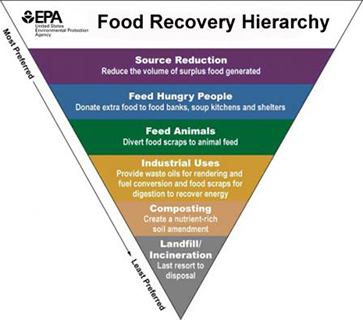America’s Food Waste Problem
Posted April 22, 2016
This article is part of a series about EPA's Net Zero program.
In September 2015, U.S. EPA Administrator Gina McCarthy and the U.S. Department of Agricultural Secretary Tom Vilsack announced the first ever national food reduction goal. They called for a 50% reduction in food waste by the year 2030 with an eye toward conserving natural resources and protecting the planet from climate change.
Every year in the United States, approximately 31% (133 billion pounds) of the overall food supply is wasted, which impacts food security, resource conservation, and contributes to the 18% of total U.S. methane emissions that come from landfills. Reducing the amount of food waste sent to landfills can help ease the impact of climate change and also put food in the mouths of millions of people.

“Columbia is just one of many communities across the country seeking strategies to reduce and divert food waste from landfills,” explains Alex Lan, an EPA researcher in charge of the study. “Together with EPA Region 4, we are helping the City of Columbia, Fort Jackson and the University of South Carolina find opportunities in sustainable organic materials management.”
The study explores the practicality of different ways to reduce waste and provides suggestions to Columbia decision makers.
One of the study’s recommendations is for the Columbia region to create food donation programs. Organizations can keep waste from landfills by providing leftover food to soup kitchens, shelters, and food pantries. Organizations will not only be able to keep food out of landfills – they’ll save money by not having to pay extra landfill fees. However, it can take a lot of time, energy, and money to plan and execute food donation programs. This recommendation is therefore a good option for organizations committed to starting a donation program or those that already have one in place. The study included additional recommendations such as starting education programs to encourage food reduction practices and sending food waste to composting facilities.
EPA recently discussed these recommendations with Columbia organizations, and decision makers in the community are now working on actions to eliminate food waste sent to landfills.
“This study not only found feasible alternatives to significantly divert food wastes from landfills in the Columbia region, but underscores the importance of engaging a variety of stakeholders in the process,” Mr. Lan says.
Learn More:
